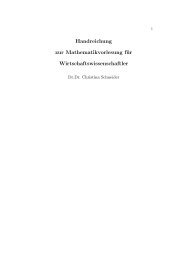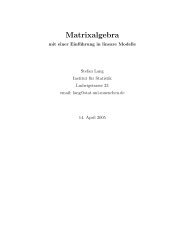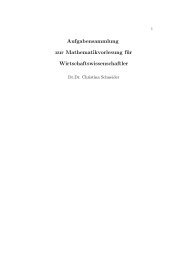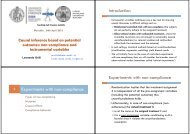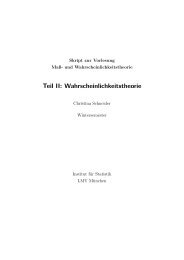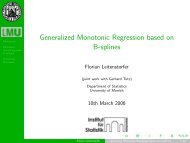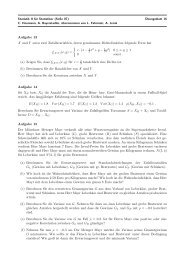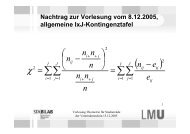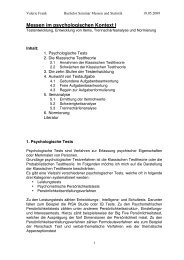Create successful ePaper yourself
Turn your PDF publications into a flip-book with our unique Google optimized e-Paper software.
12<br />
just some his<strong>to</strong>rical reasons.<br />
• ForwardBoost <strong>to</strong> compute the ForwardBoost algorithm,<br />
• GBlockBoost <strong>to</strong> compute the GBlockBoost algorithm,<br />
• GBlockBoost combined with the argument componentwise = TRUE computes componentwise<br />
boosting.<br />
If you want <strong>to</strong> implement your own fitting method then you should remind of the following<br />
aspects. The basic call of a fitting method with name method.name will be<br />
method.name (x, y, family = NULL, penalty = NULL, intercept = TRUE,<br />
control, ...)<br />
where the input arguments are<br />
x<br />
y<br />
family<br />
penalty<br />
intercept<br />
control<br />
the standardized design matrix. This will usually include a<br />
column of ones if an intercept should be included in the model.<br />
the vec<strong>to</strong>r of observed response values.<br />
a description of the error distribution and link function <strong>to</strong> be used<br />
in the model. This can be a character string naming a family<br />
function, a family function or the result of a call <strong>to</strong> a family<br />
function.<br />
a description of the penalty <strong>to</strong> be used in the fitting procedure.<br />
a logical object whether the model should include an intercept<br />
(this is recommended) or not. The default value is TRUE.<br />
a list of parameters for controlling the fitting process.<br />
... further arguments.<br />
The fitting methods have access <strong>to</strong> the environment of <strong>lqa</strong>.default(). So in principle,<br />
you can pass additional arguments from all lower level <strong>lqa</strong> function calls.<br />
To be in line with the other functions in the package the fitting method should always<br />
return a list that contains at least the following arguments<br />
coefficients<br />
tr.H<br />
Amat<br />
converged<br />
s<strong>to</strong>p.at<br />
the vec<strong>to</strong>r of the standardized estimated coefficients.<br />
the trace of the hat matrix.<br />
the penalty matrix from the last iteration.<br />
a logical variable. This should be TRUE if the algorithm indeed<br />
converged.<br />
the number of iterations until convergence.<br />
m.s<strong>to</strong>p the number of iterations until AIC reaches its minimum.<br />
The last argument m.s<strong>to</strong>p is only necessary for fitting algorithms where the iteration of<br />
optimal s<strong>to</strong>pping is less than the number of iterations until convergence. This is especially<br />
related <strong>to</strong> boosting methods.



